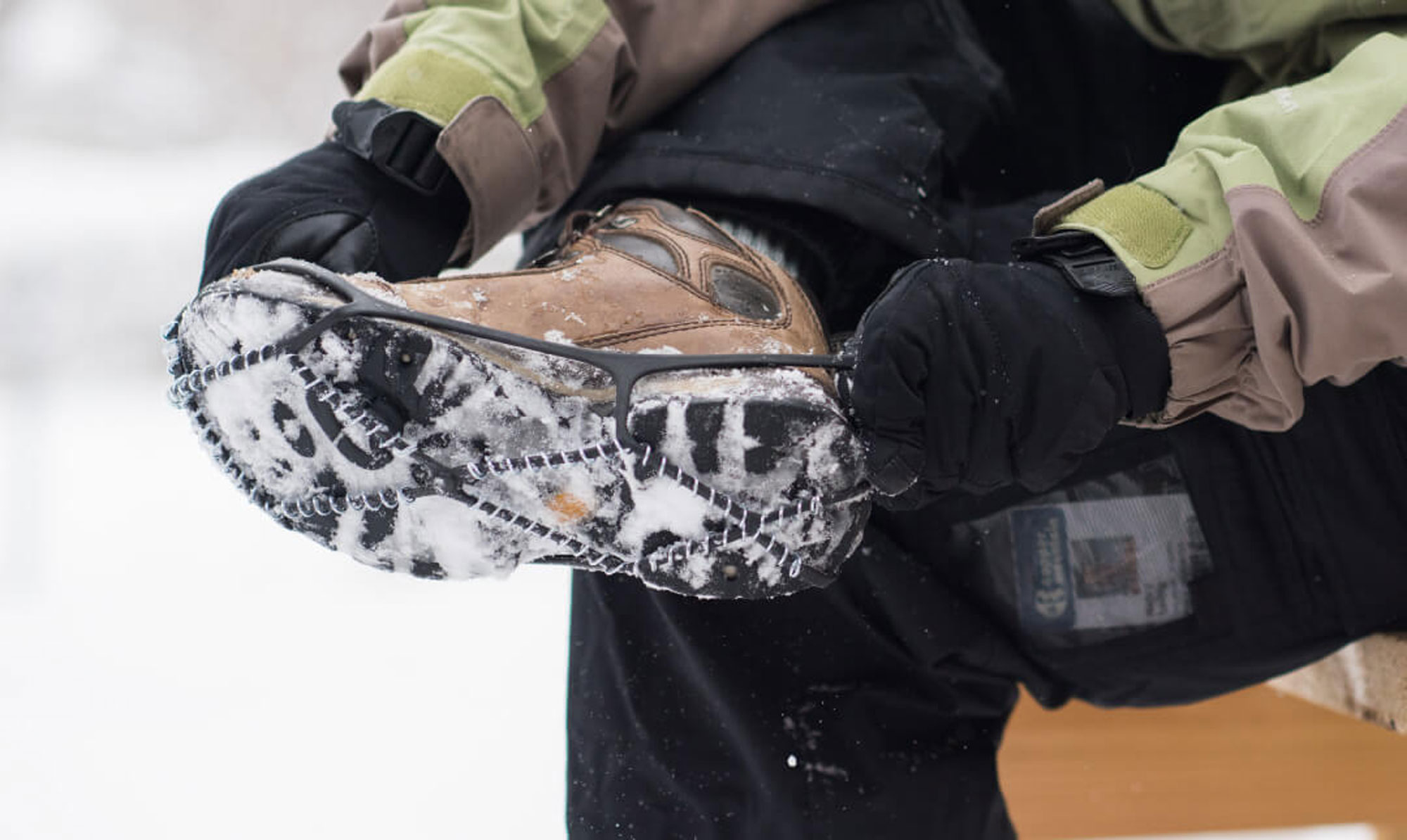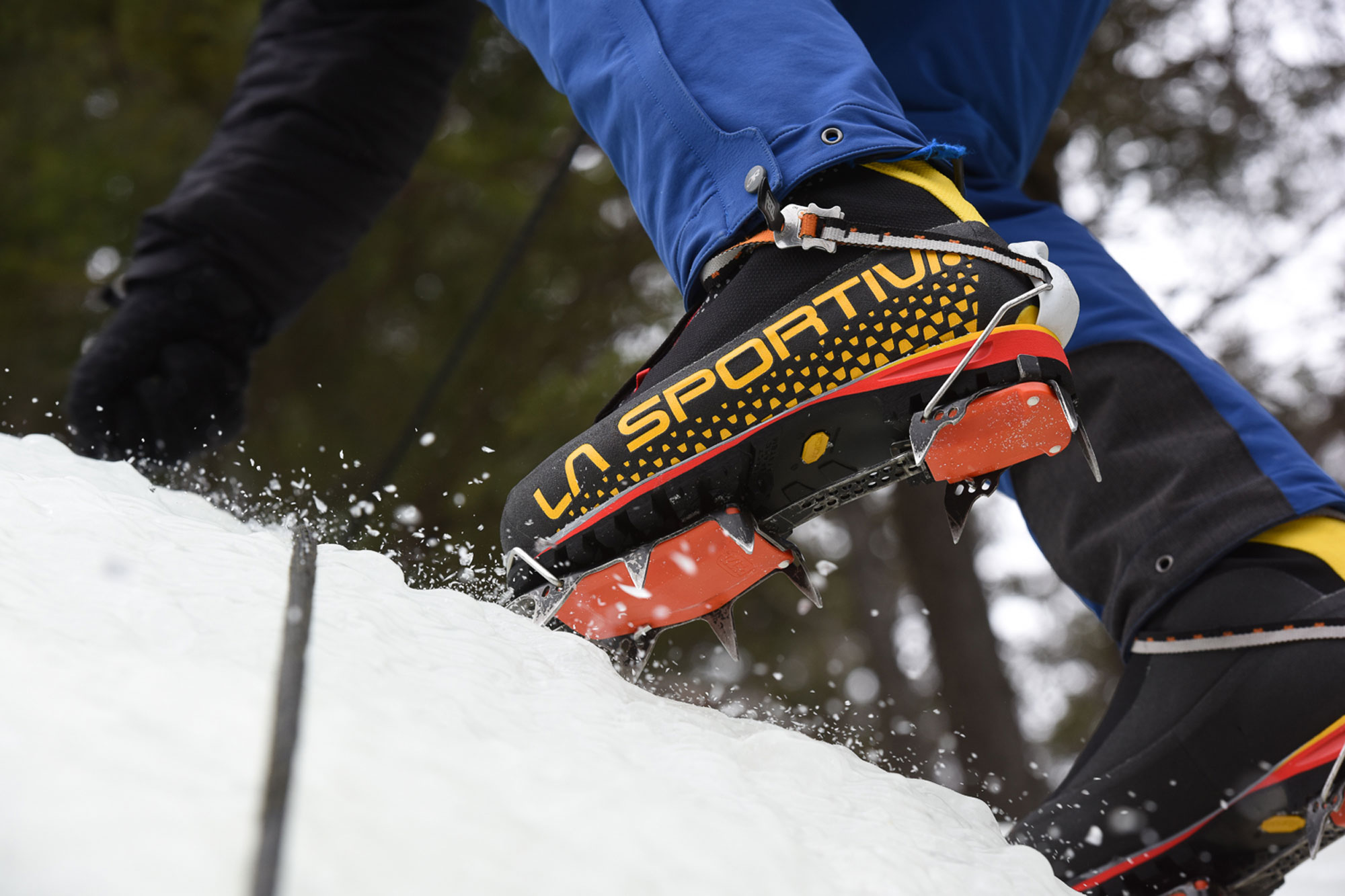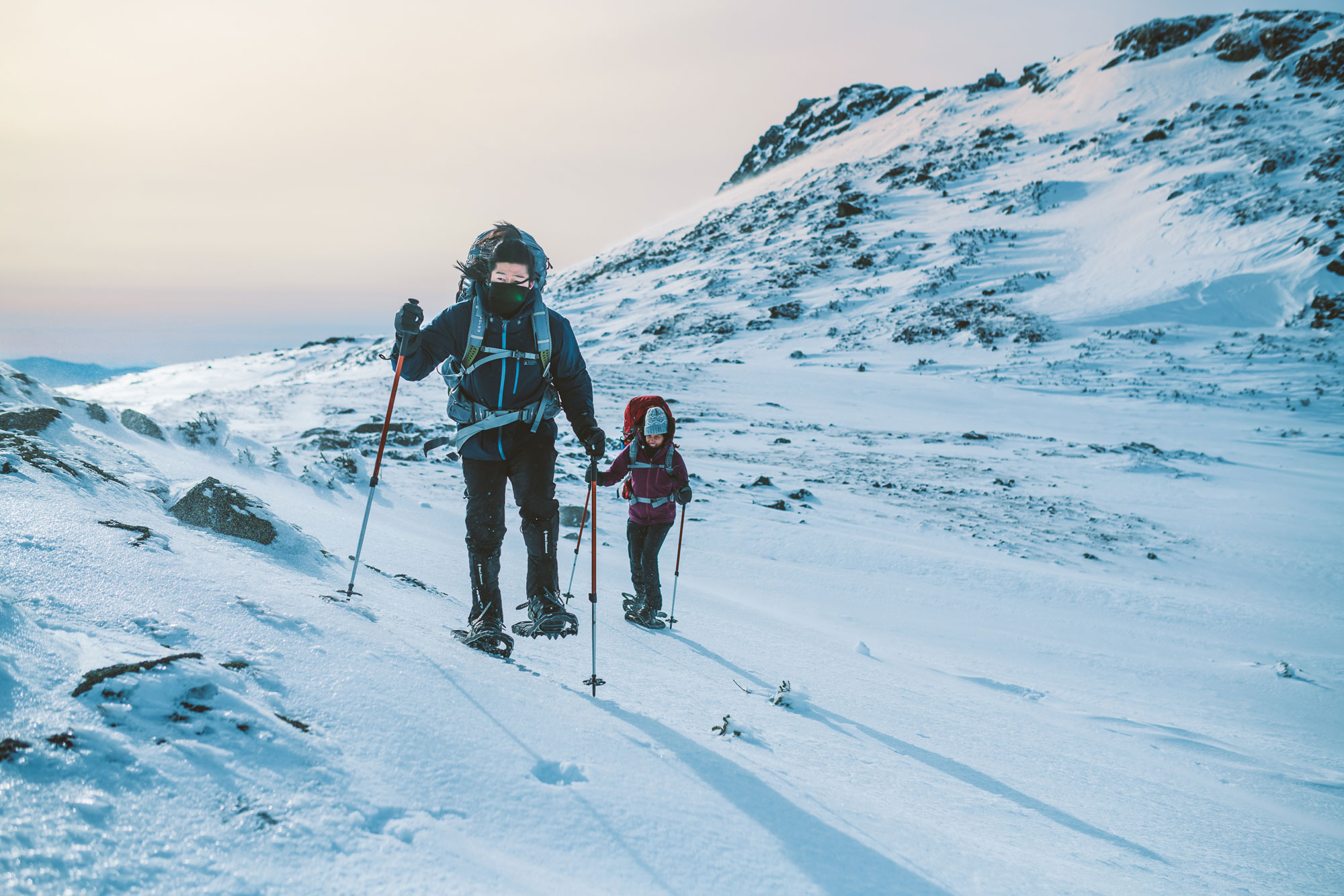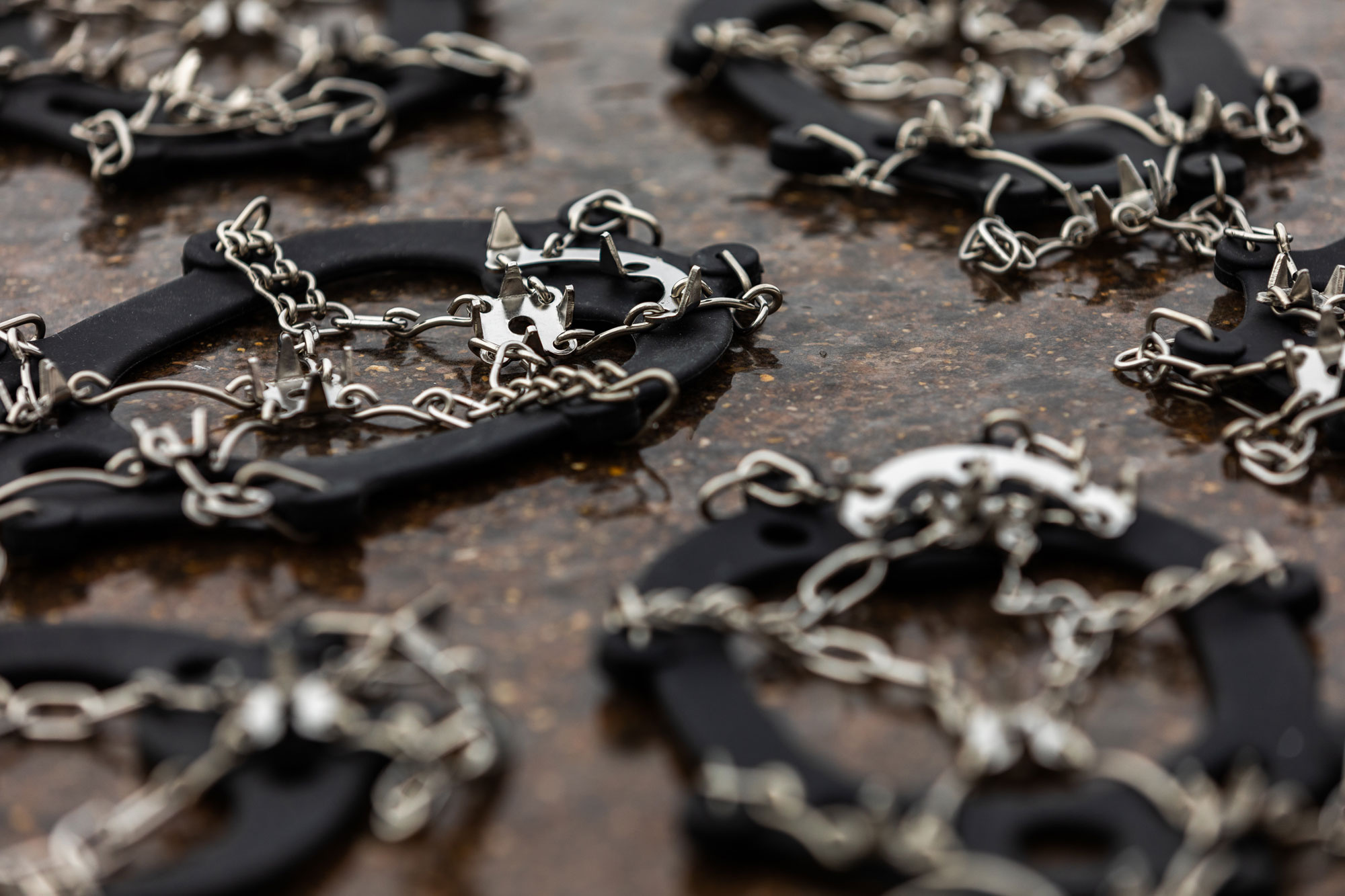When you step out of the car at a wintry trailhead, the decision about what to put on your feet can be stressful: Can I get by with spikes? Is this a snowshow situation? Or will I need to break out the crampons?! While it’s always best to come prepared with options, there are a few tips to keep in mind that will make your winter traction decisions easier. Here’s what you need to know, and how to make the right choices.
The wide array of sharp, shiny and bulky boot attachments on the market can be really dizzying. Winter traction options vary widely in their design and application, not to mention their price tag. But there are three main categories of winter traction you should think about before you hit the trail.

Coil Cleats
The lightest form of traction, and most common with beginners, are the traction cleats made popular by Yaktrax. You probably recognize them: Rubber webs wrapped in metal coils that easily strap to your boots.
These are the most affordable option, and definitely give you a bit more grip on snowy surfaces, and are great for snowy walks in the park, or road runs, or shoveling the driveway. But their utility can really go downhill (pun intended) on steep mountain trails, and especially on icy surfaces.

Traction Spikes
That’s where the next level of traction comes in, with a product like the EMS Ice Talons. These are similar to coil cleats, but in place of coils, the bottom of your boot is wrapped in stainless steel chains and short, hardened steel spikes. These are still relatively lightweight and affordable, but dig deeper into snow and ice and are far more durable.
For most winter adventures and hikes in the East where you don’t need the floatation of snowshoes, items like the Ice Talons are your best bet. Spikes give you a good grip on a snowy trail that’s already been packed down and might still be a little slippery under bare boots. Plus, the Ice Talons can give you solid grip on icy patches: the spikes dig in where coils would likely slip. For 90 percent of the trails and summits in the East, they’ll keep you firmly planted on the ground and will last years. Plus, the Ice Talons are light and minimal enough that you don’t need to worry about cutting up your pants or carrying any extra weight, and the beefy elastomer band makes them easy to secure to any boots.

Crampons
Where those aren’t enough, you might turn to the more intense beasts of winter traction: crampons. These go up in price pretty quickly, but they arm the bottom of your boots with tall, incisive claws that are meant to grip sheer ice and virtually guarantee traction in a range of wintry conditions. They are best used when ice climbing or climbing steep glaciers outside of the Northeast. Just be careful where you wave those sharpened boots.

Snowshoes
And finally, there’s one more type of traction to consider: snowshoes. If you’re hitting a trail that has yet to be broken out by hikers, snowshoes are the best way to proceed without “post-holing” (leaving big holes in the snow with each step you take). In fact, snowshoes are required on such trails in the Adirondacks during winter months. But most are also built with some degree of traction on the bottom, meaning you can go from deep snow below treeline, to slippery ice above, without stopping to change out your footwear.

Having the right level of traction can go a long way, not only toward making sure you keep from slipping on the trail, but toward making you more efficient as a hiker. More often than not, a set of spikes like the Ice Talons will get you where you need to go, but pick the right device for the conditions you’re hiking.
Mike De Socio
Mike De Socio is a freelance journalist writing about the outdoors, adventures and so much more. He lives in upstate New York, where he hikes everything from the Adirondacks to the Catskills, in every season of the year (winter is his favorite). He also spends a lot of time on his bike — his primary form of transportation — and pedals through cities and along rivers around the region.




